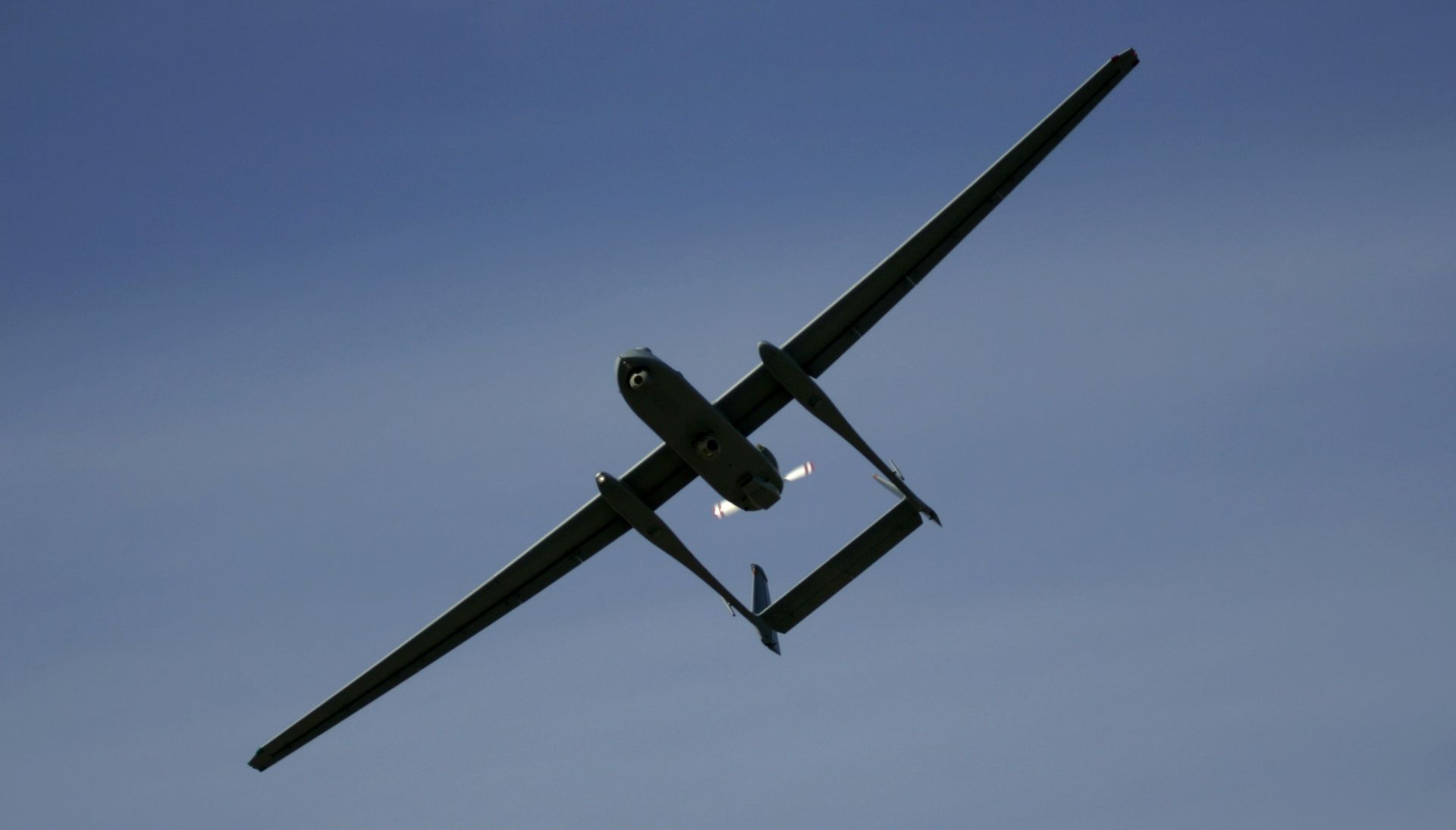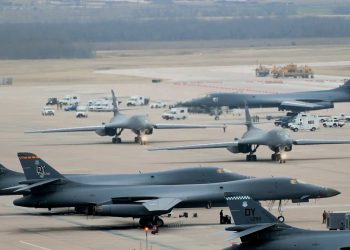, GRAND FORKS AIR FORCE BASE: Somewhere over Iraq, a tanker flies through the shimmering heat of the desert sun. The crew successfully off-loaded fuel to a pair of F-16 Fighting Falcons, performing their part of the close-air-support mission, before heading back to base.
As they approach the airfield, a rocket fired from a man-portable air defense, or MANPAD, weapon streaks toward them. The KC-135 Stratotanker would be a sitting duck if not for the preparation the crew received ahead of time from a tanker tactics specialist.
This scenario is one possibility tanker crews might encounter while flying in an area of responsibility. To counter threats and develop defensive tactics, pilots attend specialized training at the KC-135 Air Force Weapons School at Fairchild Air Force Base, Wash. The two pilots here recently returned from the school as experts in tactical planning, increasing the wing's number of weapons officers to five.
For Capts. Sheroyd Brown and Justin Hendricks, both instructor pilots currently assigned to the 319th Operations Support Squadron, weapons school was a grueling five and a half months of classroom and applied instruction.
“Weapons school was the most exhausting training I've been through,” said Captain Hendricks. “There was so much information to absorb over a wide range of topics, not restricted to flying like pilot training was.”
Only six students are accepted into one of the two sessions each year. However, aircrews at the KC-135 Weapons School at Fairchild participated with fliers from the other Air Force weapons schools at Nellis AFB, Nev., for exercises where pilots of different weapon systems could apply and test what they learned.
The final exercise included more than 50 aircraft with an additional 30 aggressor aircraft, saturating the 150 mile by 50 mile military operating area. The large number of aircraft created a challenge but also proved beneficial.
“I haven't flown with that many aircraft in the air since Operation Iraqi Freedom kicked off,” said Captain Brown. “It forced (pilots) to pay close attention to the radio congestion and stay in their airspace.”
The benefits of so many aircraft are all in the feedback. “I've never worked closely with the fighter community,” said Captain Hendricks. “We were able to get tanker tactics feedback from everyone in the exercise during a group debrief. It's one thing to get feedback from the instructors but when a fighter pilot tells you the tactics work and he had a hard time 'shooting' us down, it put the value of the training in perspective.”
Of course threats to tankers aren't just enemy aircraft. The MANPAD scenario is far more likely and special attention was paid to countering such a threat.
“We didn't just learn about how to perform defensive maneuvers in case of MANPADs,” said Captain Brown. “We learned about the way they were built, how they locked onto the aircraft, and even fired a MANPAD simulator at classmates to see how easy they really were to use.”
“I've heard in Intel briefings about how a guy with less than a first grade education can pick up one of these things and fire it, but I never really took it to heart,” added Captain Hendricks. “After firing the simulator, I believed every word of it. It really hit home how easy MANPADs are to fire and how serious the threat was.”
As weapon instructor officers, Captains Brown and Hendricks have the responsibility of educating wing pilots on advanced tactics.
“Weapons officers are very popular around the wing. We've been home for two weeks and have already had numerous questions from my peers about tactics,” said Captain Hendricks.
According to the recent graduates, the primary role of weapons officer is in the planning of missions. “Here, we try to turn the routine missions into more of a tactical mission,” said Captain Hendricks. “We try to get the crew thinking in a tactical mindset. What do they need to do if there was a MANPAD at the end of the runway, for instance.”
They also deploy in that planning role, filling billets in the Air Operations Center and planning missions in a dynamic battle space.
“Much of the school focused on the AOC staff structure and the information flow between different air assets,” Captain Hendricks noted. “The progression plan for weapons officers is three-tiered. We're filling a first-tier role by training our respective wings. The follow-on tiers include billets at the major or unified command level eventually culminating in the third tier billet as part of the AOC.”
With Grand Forks AFB occupying a third of the weapons school slots this past session and three other weapons officers already stationed here, the tanker crews leaving for deployment to support combat operations will be better prepared just in case they are on the business end of a MANPAD.
Beijing slams US over potential Chinese drone ban
China said on Friday it would take "all necessary measures" in response to the United States announcing it was considering...








